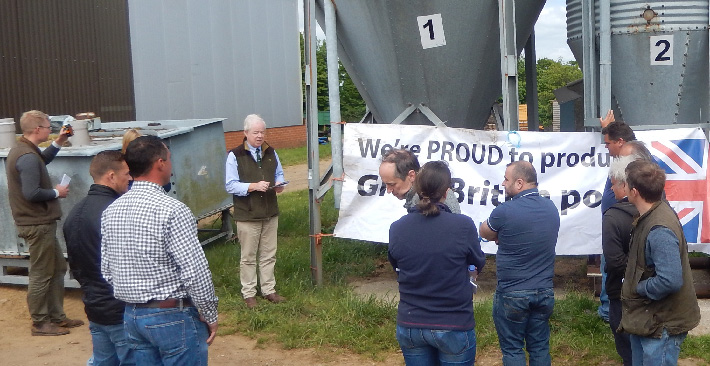Prices seem to be flatlining in most sectors, and although some pig buyers referred to demand being “no worse” one or two were slightly more positive and hopefully we might see something of a recovery in the months ahead to ease the financial pressures being faced by many producers at present.
The SPP only moved by a gnat’s whisker down by 0.01p to stand at 137.49p and most weekly contribution prices have remained at similar levels within the 125.5-129p range. Spot buyers were operating in the 128-131p region and fresh meat pig buyers are still reporting selective demand, with shoulders particularly hard to sell.
Although German pig meat prices have stayed at similar levels, cull sow buyers took a penny off their bid prices reflecting a stronger pound with the euro slipping from 87.07p last Friday to 85.82p today.
As a result, most cull sow bids were in the 58-62p range but still at low levels and are a disincentive for producers to re- stock ageing herds with young nubile gilts.
Weaner prices are starting to show a marginal recovery with the latest AHDB 7kg average price up by .94p to £36.77 and the latest 30kg weaner price has risen to £48.93 after 3 weeks with no quotes being available.
Reports of one or two spot weaner deals are being agreed at slightly firmer levels helped to some extent by recent falls in pig prices might hopefully also indicate better weaner prices in the weeks ahead……we shall see.
Grain and protein prices are continuing to reflect slightly bearish trends, with May London feed wheat quoted at £164.25/t, and November at £146.25/t. UK protein prices are also continuing to ease with 48% Brazilian soya meal continuing to weaken, with recent deals done at slightly under £300/t.
Recent reports of new crop grain values falling away continue to filter through and UK wheat futures have lost £12.65/t since the start of the year. This is mainly due to suggestions that there is anticipation of large global new wheat crops on the horizon.
Producers can also possibly raise a small glass of vodka and say cheers (“ypa”) to the Russians where wheat crop yield estimates in the Ukraine and Russia are also ahead of earlier forecasts, which might help to keep the bears ahead of the bulls.
And finally, there are still several question marks over the current Brexit situation and although some reports are indicating that the threat of a “No Deal” may have reduced. Theresa May has agreed to MPs having two votes if they reject her Withdrawal Agreement when they vote on March 12 on whether to leave the EU without a deal in place, but reports indicate this will probably be rejected and would be followed by another vote to delay Brexit, which could well be accepted by a Commons majority.
Until this point has been resolved it is difficult to forecast the effect that this will have on the pig industry although Mr Gove has suggested there will be some support for the most vulnerable sections of UK agriculture and that quotas would be set to limit tariff free import volumes which are over and above current levels.
The Government are also indicating that the UK will retain the same pig welfare and other standards that are in place with the EU to try and stem the flow of potentially illegal imports from outside the EU itself.




